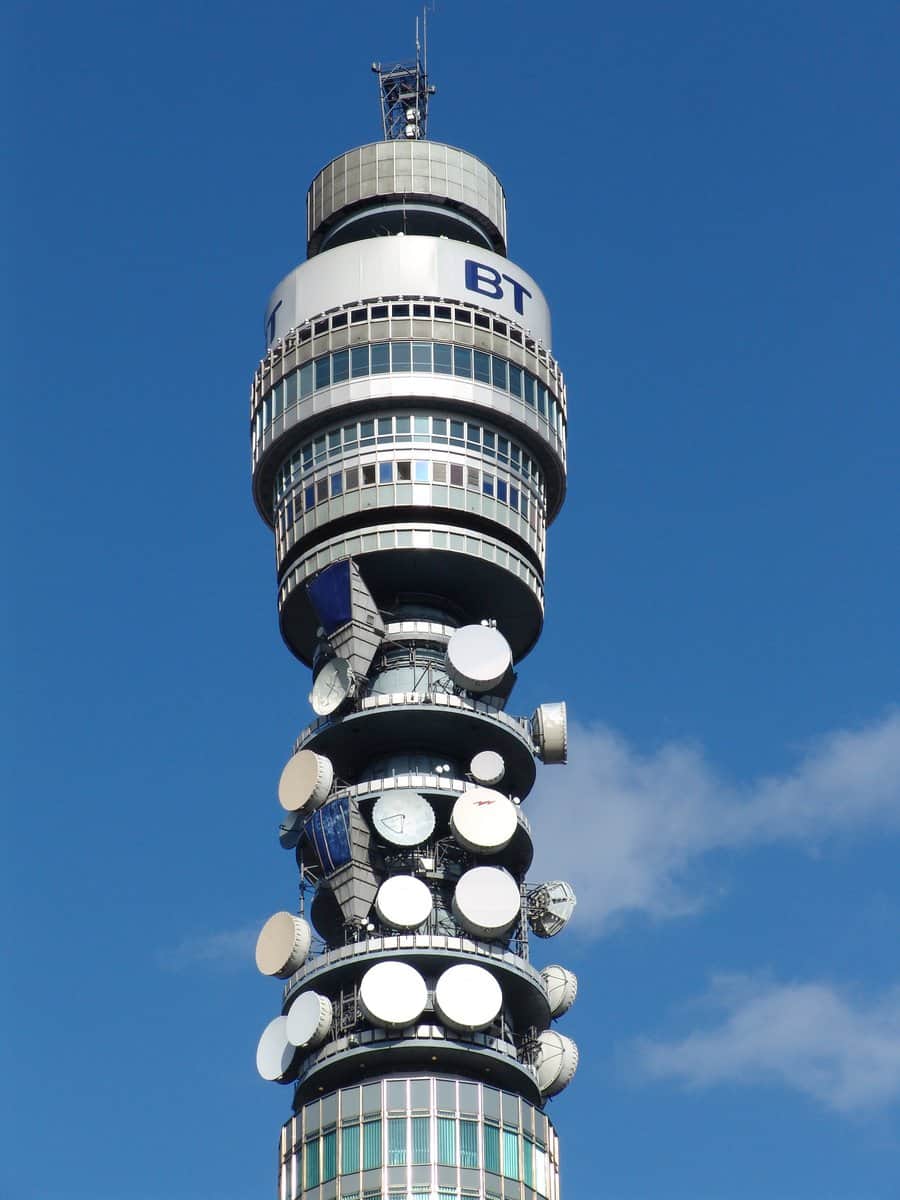
Many famous old buildings in London when deemed surplus to requirements have found new life as hotels. Examples are the new Raffles Hotel, which used to be Old War Office, the Corinthia hotel and the Lanesborough, which in a symbol of what has happened to London, used to be a hospital. The latest to be put through the process will be one of the most iconic of London landmarks: the BT Tower.
The tower was originally commissioned by the General Post Office to support the microwave aerials used to carry telecoms traffic from London to the rest of the country and was needed to ensure the radio links’ “line of sight” in an era when tall buildings first began to appear in London.
Construction began in June 1961, completed on 15 July 1964, and officially then opened by Harold Wilson on 8 October 1965. As well as the communications equipment and office space, there were viewing galleries, a souvenir shop and a rotating restaurant on the 34th floor; this was called The Top of the Tower, and operated by Butlins. It made one revolution every 23 minutes. In its first year the Tower hosted just under one million visitors and over 100,000 diners ate in the restaurant. The tower also had an “infoband” which scrolled messages (in text) on screens wrapped around the building near the top.
However, its fate took a different turn when a bomb exploded in the roof of the men’s toilets at the Top of the Tower restaurant at 04:30 on 31 October 1971, with the blast damaging buildings and cars up to 400 yards away. Responsibility for the bomb was claimed by members of the appropriately named Angry Brigade, a far-left anarchist collective. A call was also made by a person claiming to be the Kilburn Battalion of the IRA. The bombing resulted in the tower and the restaurant being closed to the public for security reasons.
Since then, other than on occasional open days the BT Tower has remained off limits to Londoners, which is a great shame that will be at least partly addressed by the opening of the hotel.
The hotel group that has signed the contract to develop the BT Tower is MCR, which describes itself as a premier hotel management company and the 3rd largest hotel owner-operator in the United States. It has invested in and developed 189 hotel properties and offers more than 25,000 guestrooms in 150 hotels in 37 states and 107 cities. So, its one of the big boys.
However MCR does have an excellent track record with interesting buildings many of New York’s best-known hotels, including The High Line Hotel, a former seminary, and the TWA Hotel at JFK Airport, a reimagining of Eero Saarinen’s 1962 landmark Flight Center, which received a national Architecture Award from the American Institute of Architects. The company also owns and is currently redeveloping the famed Gramercy Park Hotel.
Even more encouragingly MCR has partnered with London-based Heatherwick Studio to consider how best to reimagine its use as a hotel.
“We see many parallels between the TWA Hotel and the BT Tower,” commented Tyler Morse, CEO and owner of MCR. “Both are world-renowned, groundbreaking pieces of architecture. It’s been a privilege to adapt the TWA Flight Center into new use for future generations, as it will be the BT Tower.”
Thomas Heatherwick, Founder and Design Director, Heatherwick Studio, says: “My team and I are thrilled to partner with MCR to reimagine the BT Tower. This is an extraordinary building and an amazing opportunity to bring it back to life. We’re excited at the prospect of working with Fitzrovia’s residents and with many thousands of Londoners, to repurpose this important piece of the city’s living heritage.”
Now the most important question is: will they bring back the revolving restaurant?
Related post: A stylish weekend in Krakow with easyJet Holidays